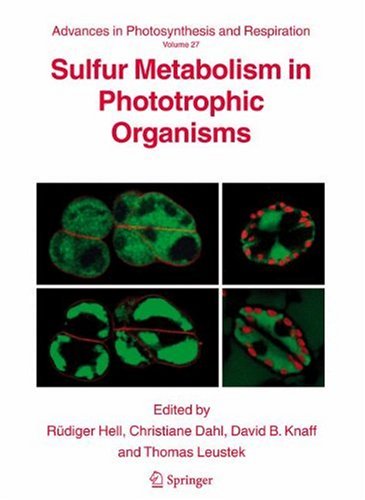

Most ebook files are in PDF format, so you can easily read them using various software such as Foxit Reader or directly on the Google Chrome browser.
Some ebook files are released by publishers in other formats such as .awz, .mobi, .epub, .fb2, etc. You may need to install specific software to read these formats on mobile/PC, such as Calibre.
Please read the tutorial at this link: https://ebookbell.com/faq
We offer FREE conversion to the popular formats you request; however, this may take some time. Therefore, right after payment, please email us, and we will try to provide the service as quickly as possible.
For some exceptional file formats or broken links (if any), please refrain from opening any disputes. Instead, email us first, and we will try to assist within a maximum of 6 hours.
EbookBell Team

5.0
28 reviewsSulfur is one of the most versatile elements in life due to its reactivity in different oxidation and reduction states. In phototrophic organisms, the redox properties of sulfur in proteins, and of sulfur-containing metabolites, are particularly important in the interaction between the reductive assimilation processes of photosynthesis and reactive oxygen species that arise as by-products of electron transport chains. Thiol groups in proteins and metabolites are targets of reactive oxygen species, resulting in potential damage and at the same time giving rise to redox signal cascades that trigger repair reactions and adaptation to environmental stress. Further, reduced sulfur compounds play a prominent role as electron donors for photosynthetic carbon dioxide fixation in anoxygenic phototrophic sulfur bacteria. Interest in the investigation of the multiple functions of sulfur-related processes has increased exponentially in recent years, especially in molecular and cellular biology, biochemistry, agrobiotechnology and ecology. This book provides, for the first time, in-depth and integrated coverage of the functions of sulfur in phototrophic organisms including bacteria, plants and algae; it bridges gaps between biochemistry and cellular biology of sulfur in these organisms, and of biology and environments dominated by them. This book is designed to be a comprehensive resource on sulfur in phototrophic organisms for advanced undergraduate and graduate students, beginning researchers and teachers in the area of photosynthesis, bacterial energy metabolism, biotechnology, plant nutrition, plant production and plant molecular physiology.